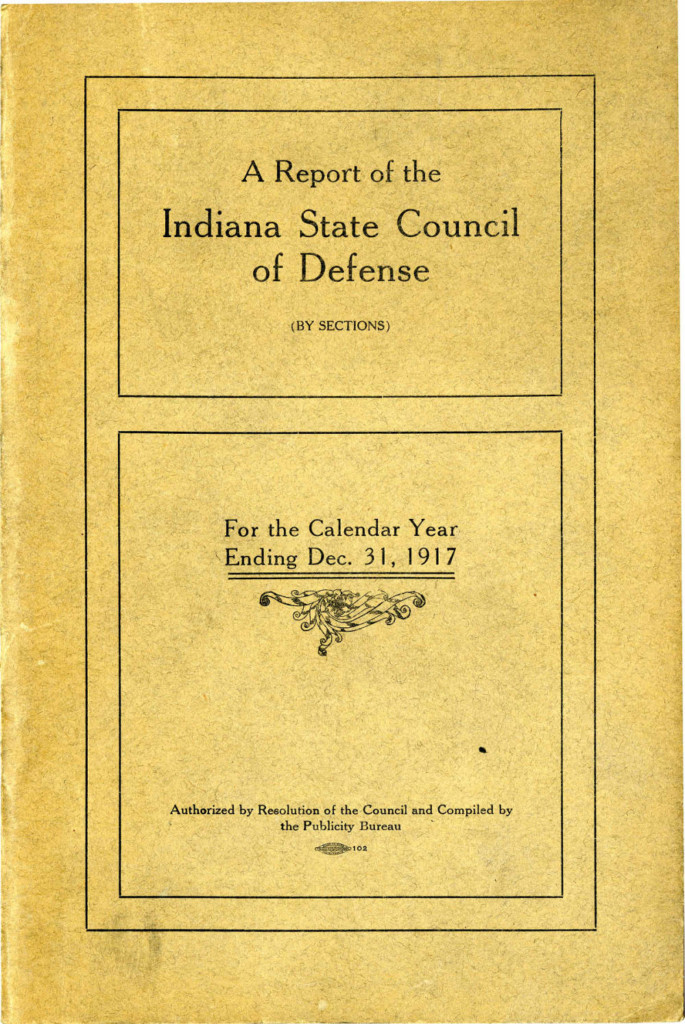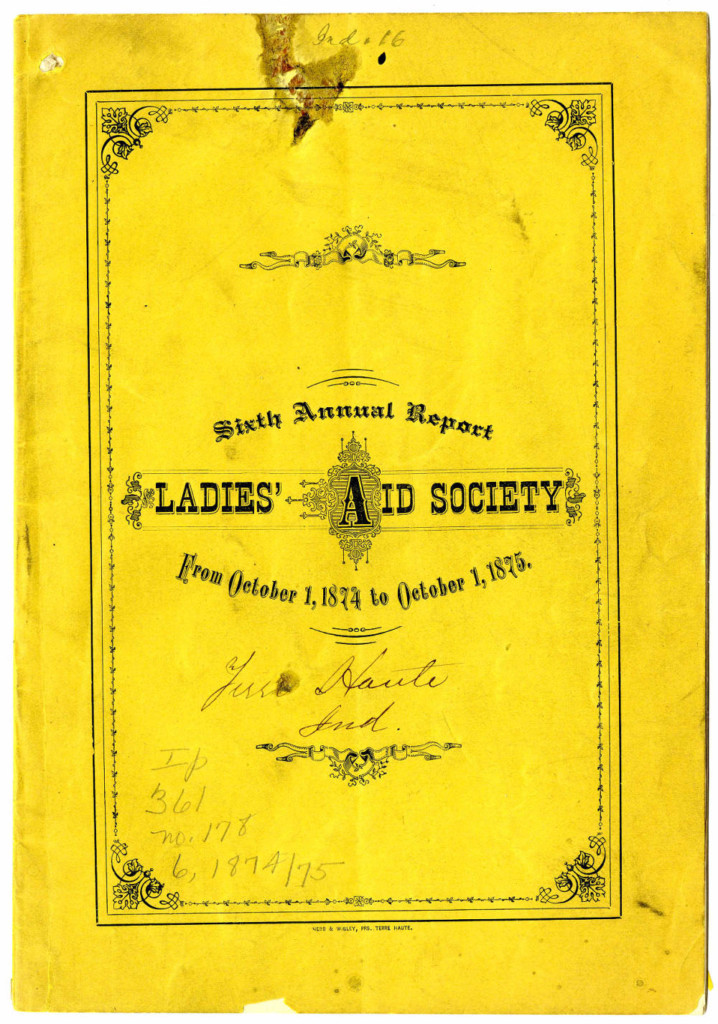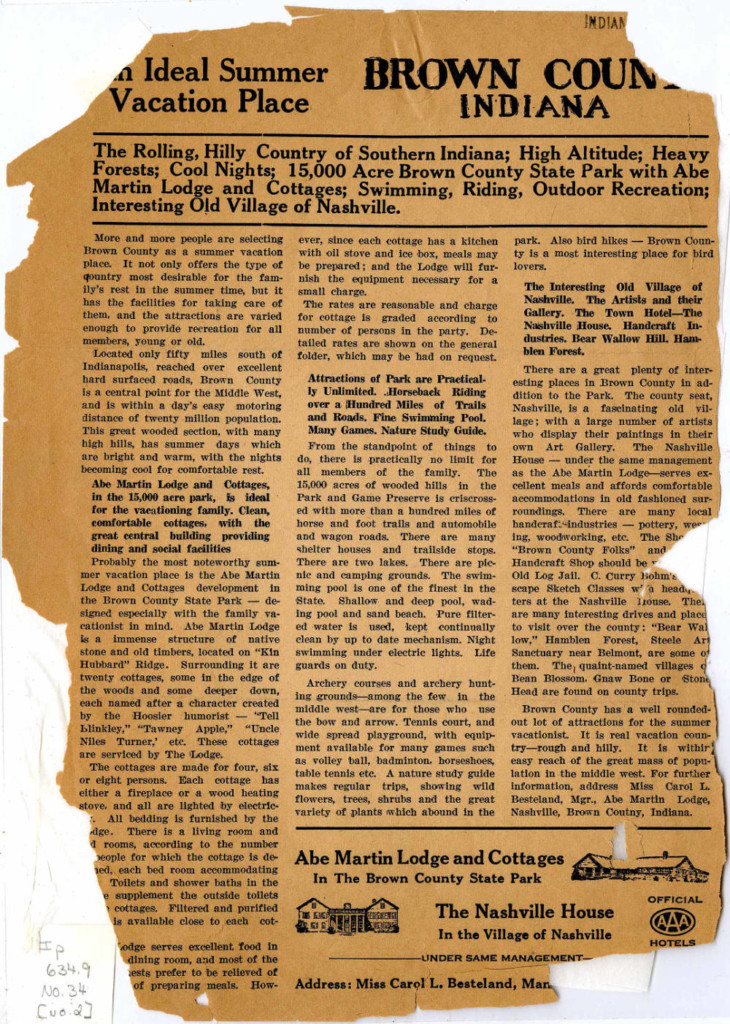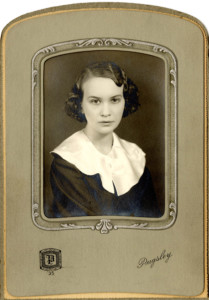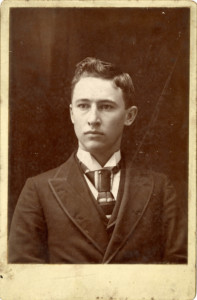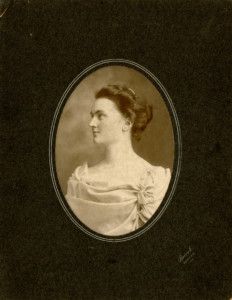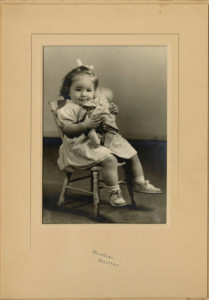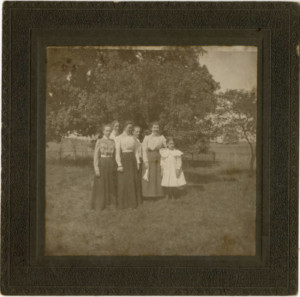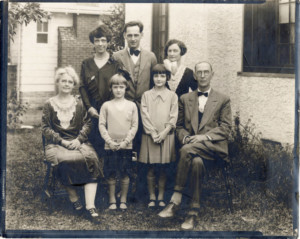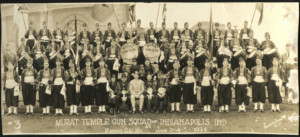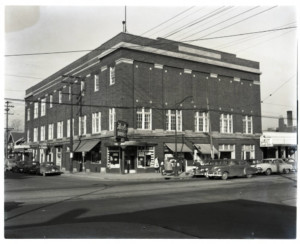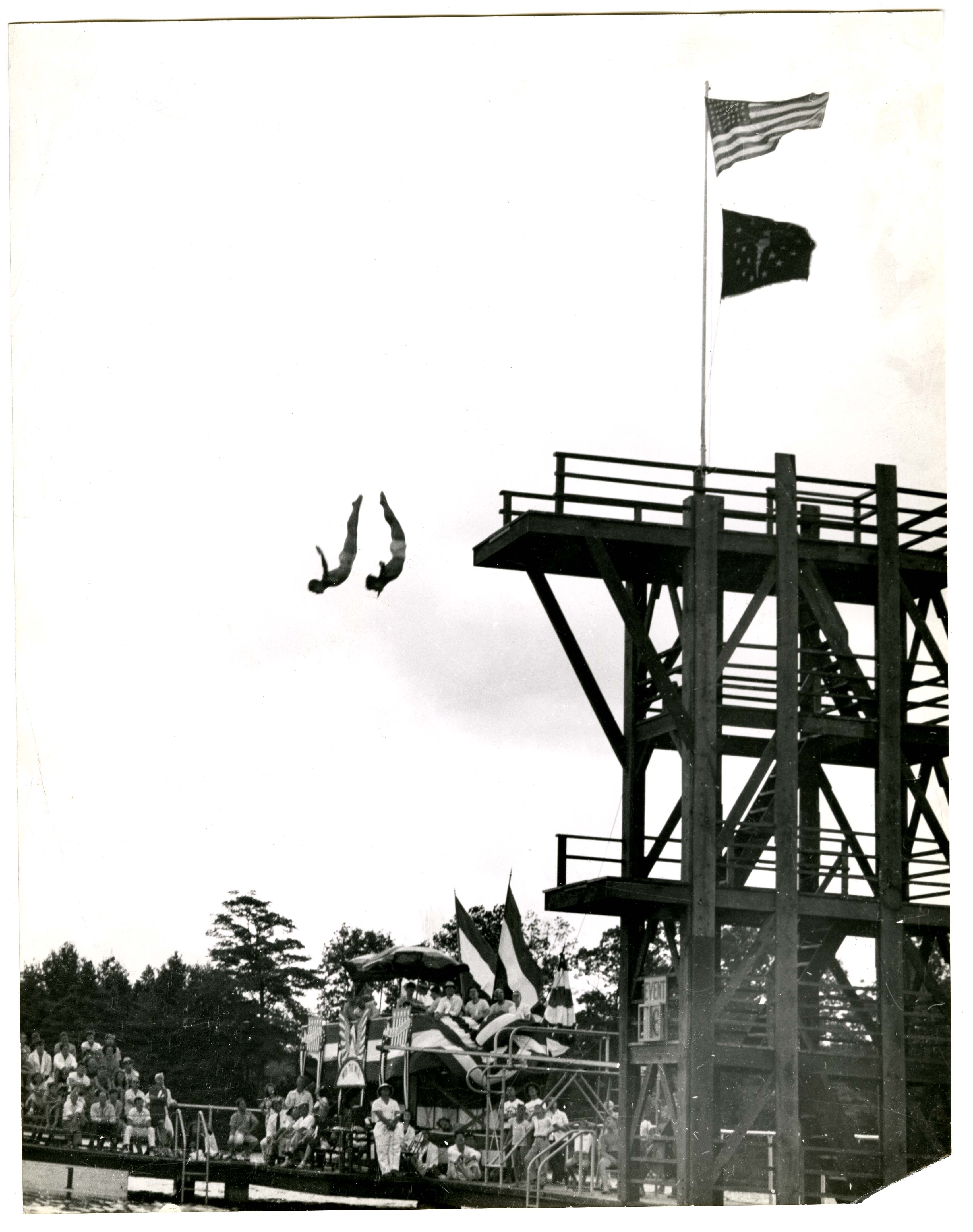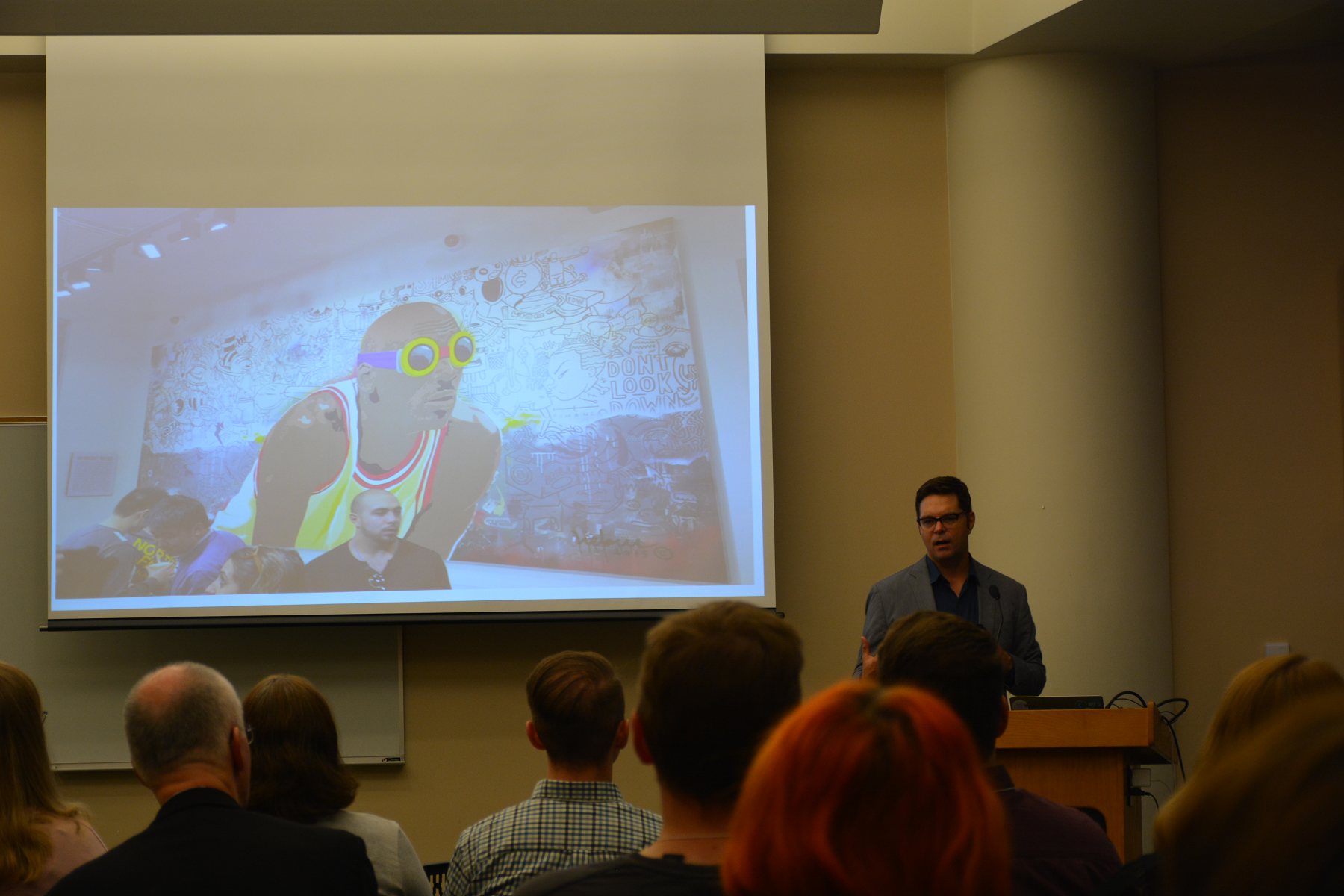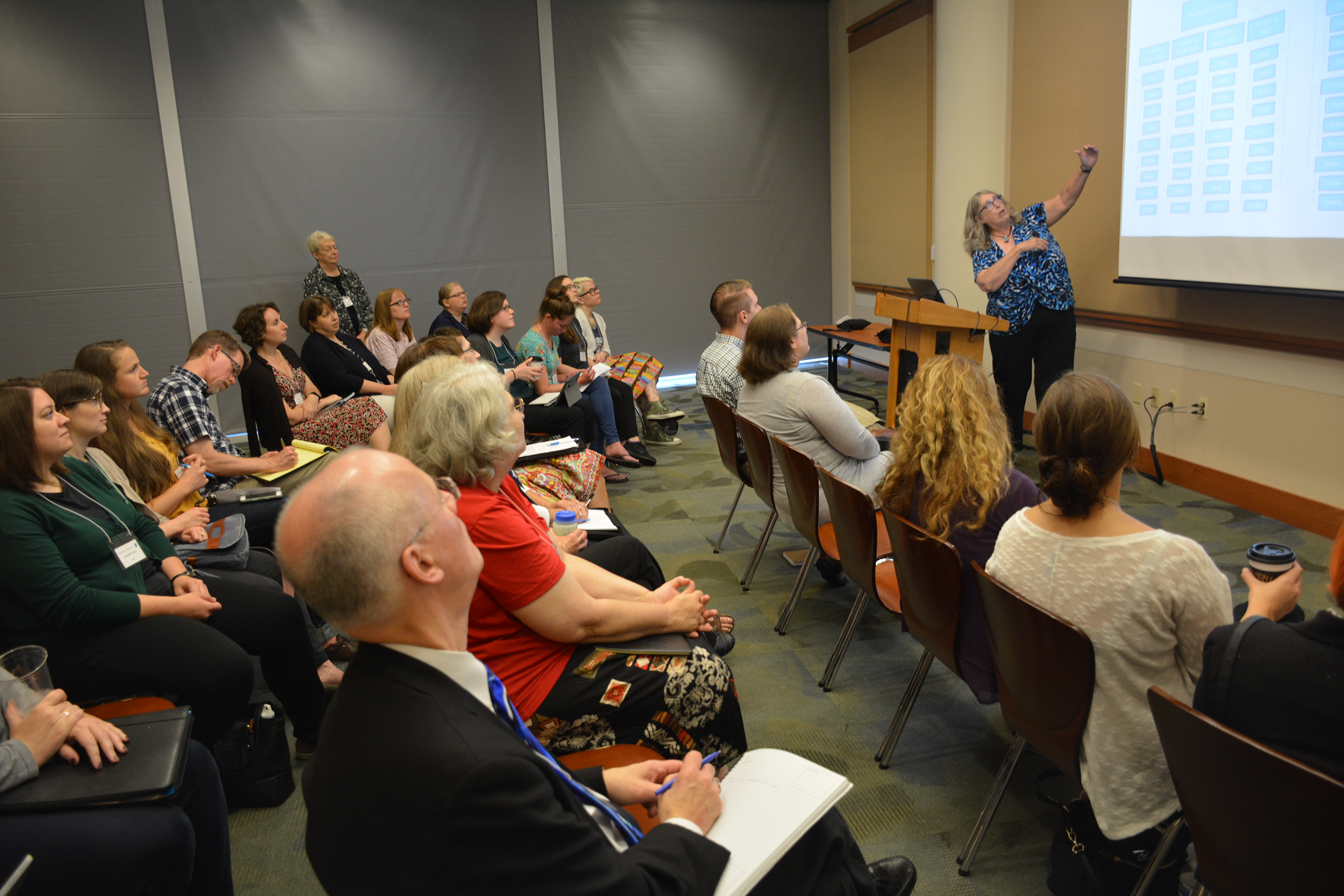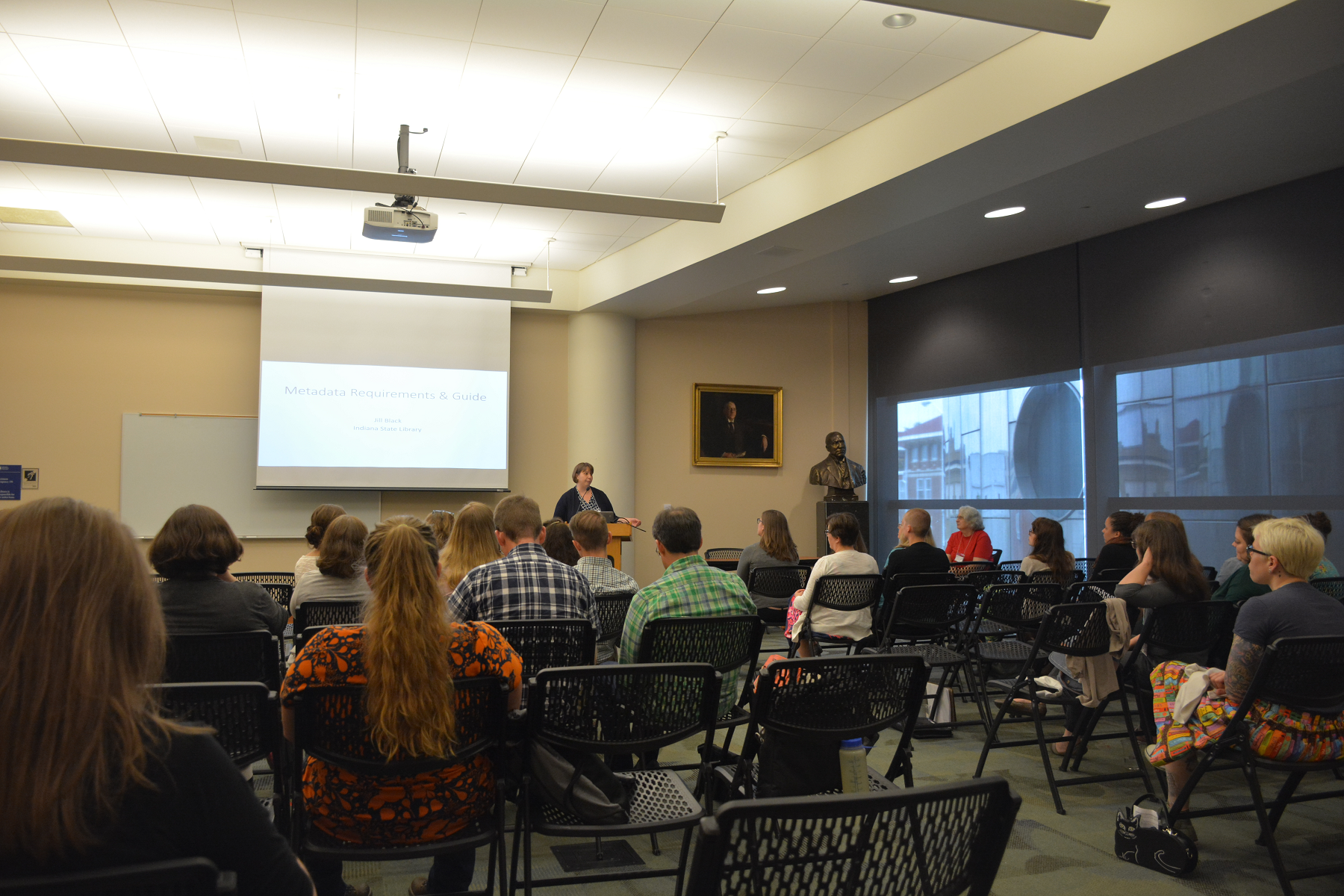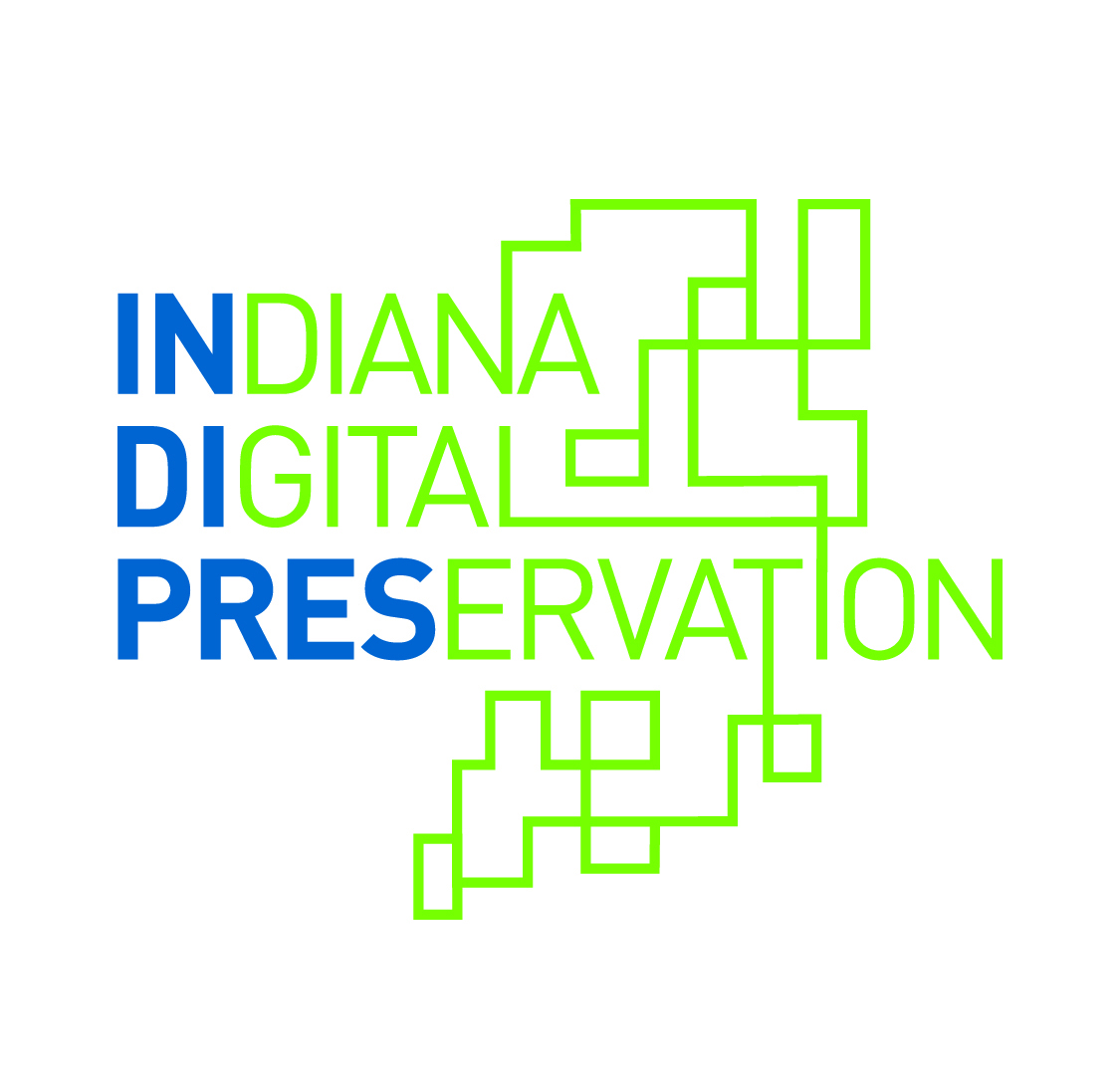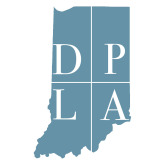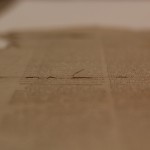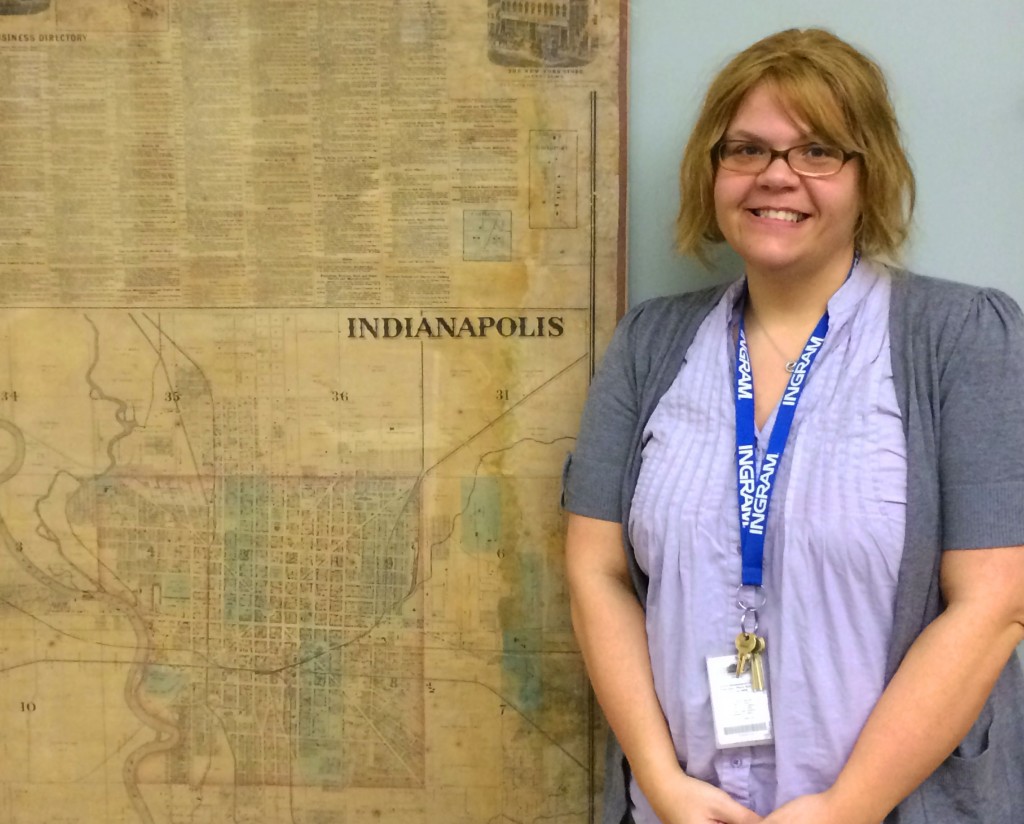This fall, the Indiana State Library purchased a large – and lovely, if I do say so myself – new piece of equipment, a Gunnar Aiox digital cutting machine. Now, this machine can do a lot, but our initial uses for it will be greatly increasing the range of producible archival boxes, vastly expanding economic efficiency and massively reducing the time spent by Indiana State Library staff in terms of actually making the boxes themselves. Before this machine, staff were hand-making boxes by cutting and flaying archival board and then trying to fold and glue the board together effectively enough so that the box would last for decades. A single box would take anywhere from an hour to an hour and a half, and box cleanliness, looks and regularity were sorely missing.
 The Gunnar Aiox Hybrid XL, a state-of-the-art cutting machine, is capable of cutting anywhere from four to six boxes utilizing an amount of board previously used for only two boxes. The boxes can vary in size and shape and take about 25 minutes from design of the box on the associated computer program to the final cut being made. Then, it takes about another 10 minutes to fold up all of the boxes and get the books inside their new homes. This is an incredible amount of time and effort being saved, but – and maybe most importantly – the way the boxes are made with the machine requires no glue or adhesive whatsoever. Everything is done with precise folding theory and technique via the Aiox. This has increased the possible use time for these boxes – which are made with acid free archival board of varying sizes – by decades and without needing constant checks to see if any adhesive is coming undone. The time saved might not be truly stateable, as we weren’t exactly keeping track of the time it took to make a box before. Now, we’re making boxes in no time. The ease of box making – once figured out – has been just wonderful and we’re now starting to realize how we can make and design the boxes even more efficiently than the original templates. This technology also allows us a lot more functional scrap material for smaller boxes, box/material support and general reusability. With this scrap, we’ve been able to experiment and learn about the machine in a lot more effective manner as well. And in all honesty, as someone who isn’t great with arts and crafts, this machine makes a much better box than I ever did before it arrived.
The Gunnar Aiox Hybrid XL, a state-of-the-art cutting machine, is capable of cutting anywhere from four to six boxes utilizing an amount of board previously used for only two boxes. The boxes can vary in size and shape and take about 25 minutes from design of the box on the associated computer program to the final cut being made. Then, it takes about another 10 minutes to fold up all of the boxes and get the books inside their new homes. This is an incredible amount of time and effort being saved, but – and maybe most importantly – the way the boxes are made with the machine requires no glue or adhesive whatsoever. Everything is done with precise folding theory and technique via the Aiox. This has increased the possible use time for these boxes – which are made with acid free archival board of varying sizes – by decades and without needing constant checks to see if any adhesive is coming undone. The time saved might not be truly stateable, as we weren’t exactly keeping track of the time it took to make a box before. Now, we’re making boxes in no time. The ease of box making – once figured out – has been just wonderful and we’re now starting to realize how we can make and design the boxes even more efficiently than the original templates. This technology also allows us a lot more functional scrap material for smaller boxes, box/material support and general reusability. With this scrap, we’ve been able to experiment and learn about the machine in a lot more effective manner as well. And in all honesty, as someone who isn’t great with arts and crafts, this machine makes a much better box than I ever did before it arrived.
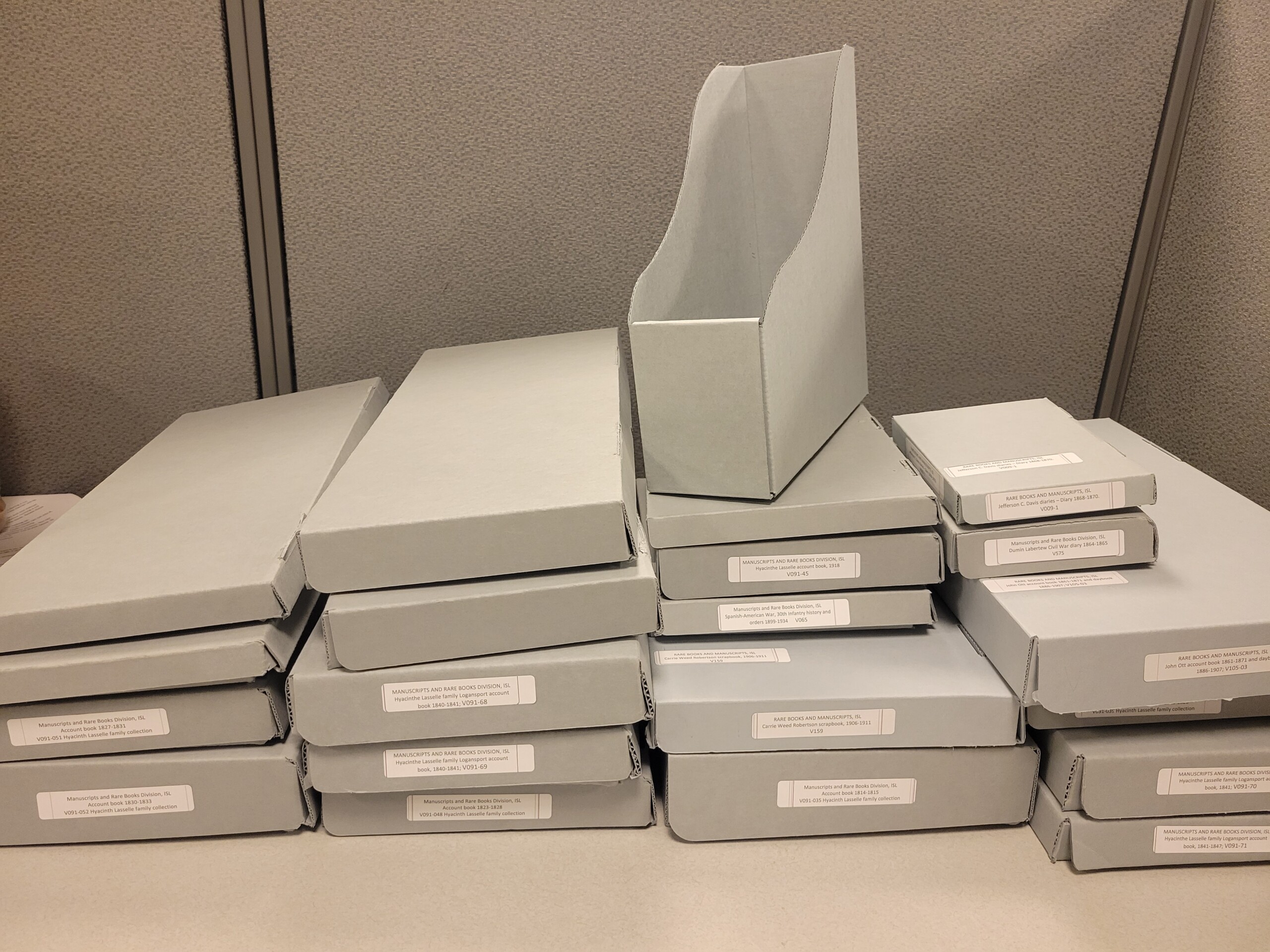 Unfortunately, we are starting in quite cramped quarters, as the Aiox was put into our current digitization laboratory, so the supplies for the Aiox are spread throughout the library. Come April, however, our digitization lab will be moved into a bigger room that’s more able to support the functions required, and the former digitization lab will be converted fully to more effectively house the Aiox and all of the required materials for box making. All of us are quite excited about the eventual move, as the process can be a bit loud and makes it difficult to do digitization work with a giant machine whirring around you. However, the machine can be operated in mostly dark conditions in case someone is working on digitization at the same time. We all tend to agree it will be much nicer to have two separate rooms, one dedicated to each process, though.
Unfortunately, we are starting in quite cramped quarters, as the Aiox was put into our current digitization laboratory, so the supplies for the Aiox are spread throughout the library. Come April, however, our digitization lab will be moved into a bigger room that’s more able to support the functions required, and the former digitization lab will be converted fully to more effectively house the Aiox and all of the required materials for box making. All of us are quite excited about the eventual move, as the process can be a bit loud and makes it difficult to do digitization work with a giant machine whirring around you. However, the machine can be operated in mostly dark conditions in case someone is working on digitization at the same time. We all tend to agree it will be much nicer to have two separate rooms, one dedicated to each process, though.
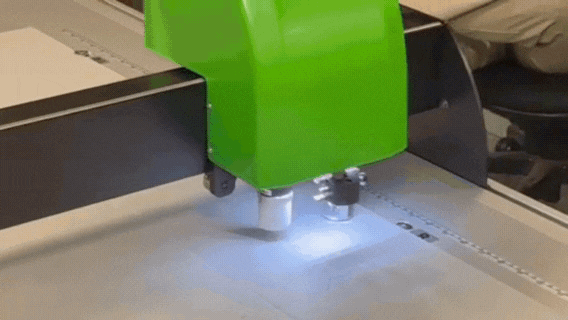 As far as ease of use goes, I was unable to be here when the professional from Gunnar was here to train us, but through the notes of my colleagues and with a bit of testing cardboard to put through the paces, I figured out how to operate the machine with comfort and ease in just a couple of sessions. Most of us who need to use the machine can figure it out in just a couple of testing sessions and can continue on without needing anyone else there to help, further increasing efficiency and time management. And I must say, this machine makes my life – in terms of storing materials that are sometimes older than the United States – a lot less stressful, because I know what I’m producing is a lot safer and more accurate than I could have ever made by hand.
As far as ease of use goes, I was unable to be here when the professional from Gunnar was here to train us, but through the notes of my colleagues and with a bit of testing cardboard to put through the paces, I figured out how to operate the machine with comfort and ease in just a couple of sessions. Most of us who need to use the machine can figure it out in just a couple of testing sessions and can continue on without needing anyone else there to help, further increasing efficiency and time management. And I must say, this machine makes my life – in terms of storing materials that are sometimes older than the United States – a lot less stressful, because I know what I’m producing is a lot safer and more accurate than I could have ever made by hand.
As someone who is only mildly tech-savvy, this machine was a bit daunting to look at and use at first, but the instructions are actually fairly simple and the true difficulty and intricacy of the machine lie in uses we haven’t even turned toward yet. We’re only just starting to use the machine with any kind of production line efficacy, and the possibilities moving forward can only grow. It’s also been a rather fun project to come together to work on and figure out. Nearly every division in the library has someone who uses the machine. Being able to make connections with co-workers through some rather humorous mistakes – we have a hilarious pile of failed boxes on test-board – is a another lovely way this piece of technology has been a benefit to the library.
This blog post was submitted by A.J. Chrapliwy of the Rare Books and Manuscripts Division of the Indiana State Library.





